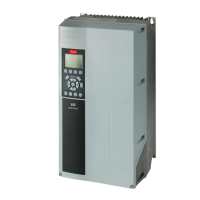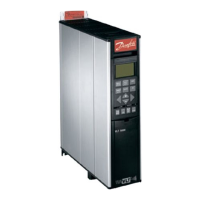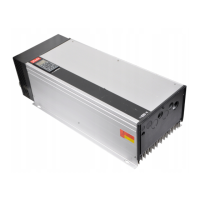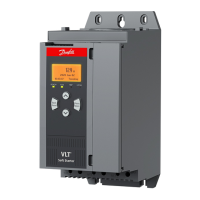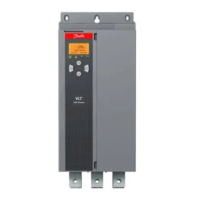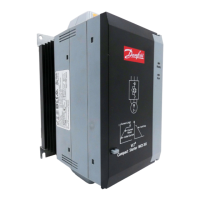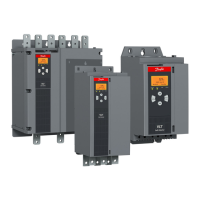3 Installation
3.1 Installation Site Checklist
3.1.1 Planning the Installation Site
Select the best possible operation site by considering the
following (see details on the following pages, and in the
Design Guide):
•
Ambient operating temperature
•
Installation method
•
Cooling
•
Position of the unit
•
Cable routing
•
Voltage and current supply from power source
•
Current rating within range
•
Fuse ratings if not using built-in fuses
3.2 Equipment Pre-Installation Checklist
•
Before unpacking the frequency converter,
examine the packaging for signs of damage. If
the unit is damaged, refuse delivery and
immediately contact the shipping company to
claim the damage.
•
Before unpacking the frequency converter, locate
it as close as possible to the final installation site
•
Compare the model number on the nameplate to
what was ordered to verify the proper equipment
•
Ensure each of the following are rated for the
same voltage:
-
Mains (power)
-
Frequency converter
-
Motor
•
Ensure the output current rating is equal to or
greater than the motor full load current for peak
motor performance.
-
Motor size and frequency converter
power must match for proper overload
protection.
-
If frequency converter rating is less than
that of the motor, full motor output is
impossible.
3.3 Mechanical Installation
3.3.1 Cooling and Airflow
Cooling
Cooling can be obtained in different ways, by using the
cooling ducts in the bottom and the top of the unit, by
taking air in and out the back of the unit or by combining
the cooling possibilities.
Back cooling
The backchannel air can also be ventilated in and out the
back of a Rittal TS8 enclosure for frame size F18 LHD. This
offers a solution where the backchannel could take air
from outside the facility and return the heat losses outside
the facility thus reducing air-conditioning requirements.
NOTICE
A door fan(s) is required on the enclosure to remove the
heat losses not contained in the backchannel of the
drive and any additional losses generated from other
components installed inside the enclosure. The total
required air flow must be calculated so that the
appropriate fans can be selected. Some enclosure
manufacturers offer software for performing the
calculations (i.e. Rittal Therm software).
Airflow
The necessary airflow over the heat sink must be secured.
The flow rate is shown in Table 3.1.
Enclosure protection Frame size
Door fan/top fan airflow
Total airflow of multiple fans
Heat sink fan
Total airflow for multiple fans
IP21/NEMA 1
IP54/NEMA 12
D13 P160–P250
(LHD120)
3 door fans, 510 m
3
/h (300 cfm)
(2+1, 3x170=510)
2 heat sink fans, 1530 m
3
/h (900
cfm)
(1+1, 2x765=1530)
E9 P315–P400
(LHD210)
4 door fans, 680 m
3
/h (400 cfm)
(2+2, 4x170=680)
2 heat sink fans, 2675 m
3
/h
(1574 cfm)
(1+1, 1230+1445=2675)
F18 P500–P710
(LHD330)
6 door fans, 3150 m
3
/h (1854
cfm)
(6x525=3150)
5 heat sink fans, 4485 m
3
/h
(2639 cfm)
2+1+2, ((2x765)+(3x985)=4485)
Table 3.1 Heat Sink Air Flow
Installation Operating Instructions
MG37A202 Danfoss A/S © Rev. 2014-07-29 All rights reserved. 15
3 3

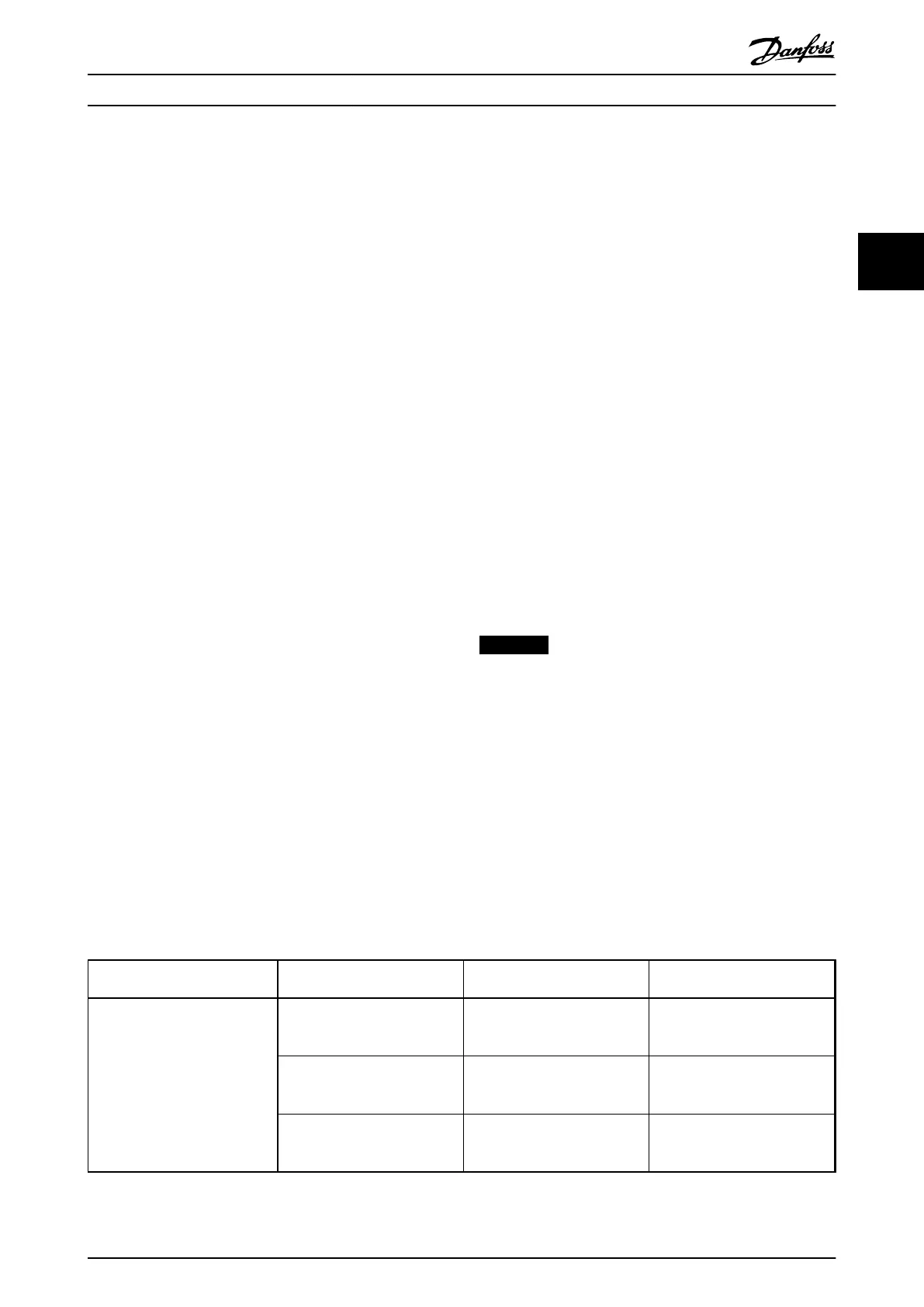